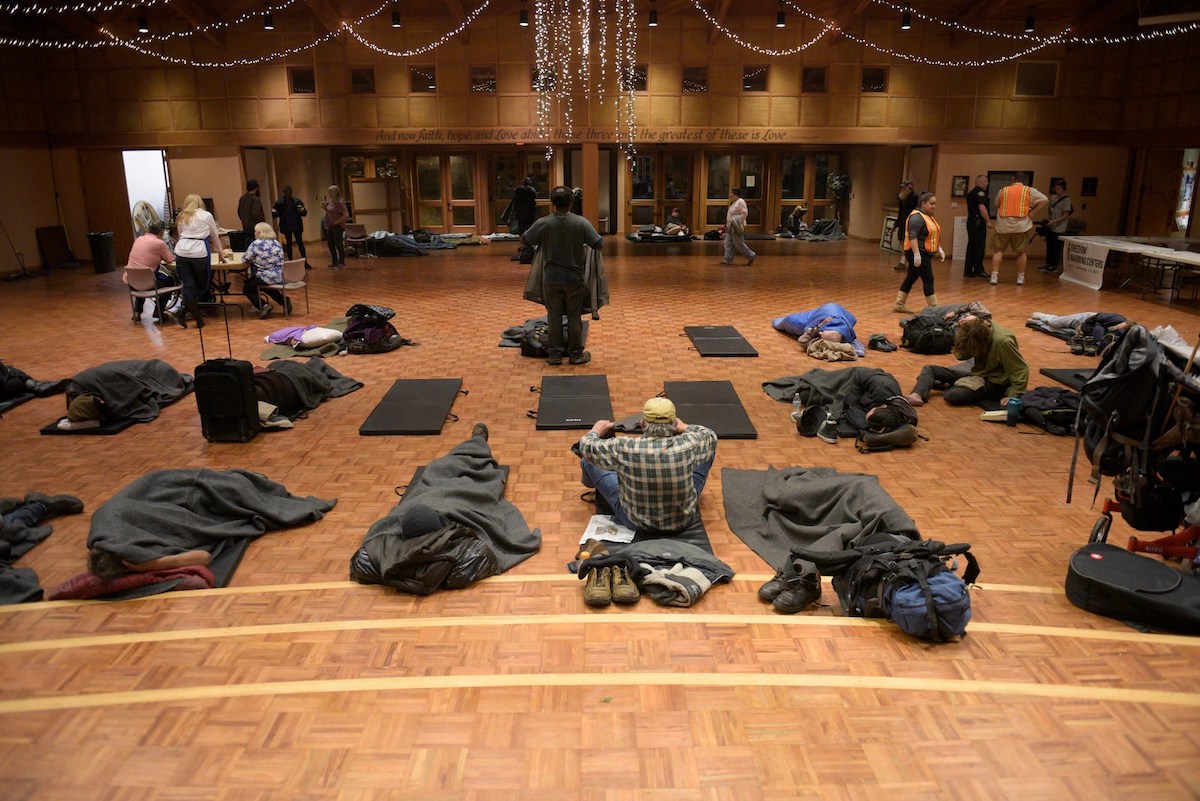Santa Barbara County Records Up to 160 Homeless Deaths over Two-Year Period
County Releases Preliminary Mortality Count for 2019-2020, Activates Emergency Warming Shelters

Based on still preliminary analysis, as many as 160 homeless people could have died in Santa Barbara County over the years 2019 and 2020. Broken down by year, 2019 could have witnessed 76 homeless deaths and for 2020, the number could be 84.
These numbers remain somewhat raw and uncooked, according to Santa Barbara County epidemiologist Ralph Barbosa, who heads the annual homeless mortality count and cautioned the numbers could be considerably lower by the time the final report goes to the county supervisors in February. It turns out that determining whether someone was homeless at the time of their demise is far more challenging than it might appear at first blush.
“It seems so simple, right?” Barbosa said. “But it’s not.”
Many of the federal privacy protections regarding the dissemination of medical information also apply to dead people, making it challenging and time-consuming for the seven-bean salad of government agencies involved in homeless mortality reviews to share information. Also, Barbosa noted, federal agencies have multiple definitions for what constitutes “homelessness.” One has to do with housing and another pertaining to medical conditions. Some of the individuals suspected of having been homeless may simply have ended their lives estranged and alienated from their next of kin.
Initial accounts of where bodies are found — on the railroad tracks, in an encampment, or in a shelter, for example — often prove anecdotal, sketchy, and inaccurate.
“It’s not just a box the coroner can check,” Barbosa added.
In fact, he said, sometimes the coroner will use the phrase “transient” to describe homelessness; other times, the same word will be used to describe a decedent going from one location to another destination.
In Santa Barbara County, people like Barbosa have been tracking the number and circumstances of homeless deaths since 1989. Joining him in this are representatives from the county’s major hospitals, homeless outreach agencies, the Public Guardian’s office, the Sheriff’s Office, the Social Services Department, and the Department of Behavioral Wellness.
Homeless deaths are tracked in part because of federal requirements imposed on government agencies that take government funds to provide homeless health care. It’s also used to determine whether enough doctors, nurses, and medical professionals are being deployed in the right numbers at the right locations.
How and where someone dies might be of epidemiological significance, but again, Barbosa stated, the cause is not always obvious. “Does your next of kin know everything about your immediate medical history?” he asked.
The numbers reported thus far, he said, are consistent with numbers released “at this stage of the process” and do not indicate a big jump. The real question, he said, is what happens to the numbers during the next 30 days of winnowing and vetting. In 2017, the county reported 44 homeless deaths. In 2016, it was 44; in 2015, 40; and in 2014, 32.
Typically, about 80 percent of the decedents are males, the vast majority White, and the average age in the lower fifties. Over the years, the number of veterans represented in this population has fluctuated from 15.6 percent to 2.5 percent, but mostly has hovered about 9 to 10 percent. Likewise, slightly less than half died outdoors. Typically, the largest number of deaths have occurred during winter months.
With Santa Barbara entering a cold snap — accompanied by last week’s punishing but replenishing rains — the issue of weather takes on a sense of urgency. This week, the county’s system of emergency shelters — operating out of various churches throughout the county — has now been activated and will remain on alert until next March 31. The system, unofficially dubbed the Freedom Warming Center, has yet to provide a single bed night of shelter, but doors will open should temperatures drop below 40 degrees or there’s a 50 percent chance — or more, of precipitation for two consecutive days.
This system was started in 2009 after a homeless individual nicknamed “Freedom” died of exposure while sitting in a wheelchair outside the homeless shelter on Cacique Street during a cold and rainy night. Currently, it’s operated by Good Samaritan Shelter services and involves 12 congregations who open their doors on a rotational basis.
Support the Santa Barbara Independent through a long-term or a single contribution.



